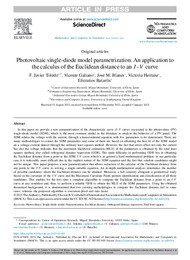Por favor, use este identificador para citar o enlazar este ítem:
https://hdl.handle.net/11000/30422Registro completo de metadatos
| Campo DC | Valor | Lengua/Idioma |
|---|---|---|
| dc.contributor.author | Toledo Melero, Fco. Javier | - |
| dc.contributor.author | Galiano, Vicente | - |
| dc.contributor.author | Blanes, Jose M. | - |
| dc.contributor.author | Herranz Cuadrado, Maria Victoria | - |
| dc.contributor.author | Batzelisd, Efstratios | - |
| dc.contributor.other | Departamentos de la UMH::Ingeniería de Computadores | es_ES |
| dc.date.accessioned | 2023-12-19T09:55:17Z | - |
| dc.date.available | 2023-12-19T09:55:17Z | - |
| dc.date.created | 2023-01 | - |
| dc.identifier.citation | Mathematics and Computers in Simulation January 2023 | es_ES |
| dc.identifier.issn | 0378-4754 | - |
| dc.identifier.uri | https://hdl.handle.net/11000/30422 | - |
| dc.description.abstract | In this paper we provide a new parametrization of the characteristic curve ( - curve) associated to the photovoltaic (PV) single-diode model (SDM), which is the most common model in the literature to analyze the behavior of a PV panel. The SDM relates the voltage with the current, through a transcendental equation with five parameters to be determined. There are many methodologies to extract the SDM parameters and some of them are based on obtaining the best fit of the SDM model on a voltage–current dataset through the ordinary least squares method. However, the fact that errors affect not only the current but also the voltage indicates that the maximum likelihood estimation (MLE) of the parameters is obtained by the total least squares method, also called orthogonal distance regression (ODR). The main difficulty in performing ODR lies in obtaining the Euclidean distance from a point to the SDM - curve which is in general a hard mathematical problem; in our particular case it is noticeably more difficult due to the implicit nature of the SDM equation and the fact that solution candidates might not be unique. This paper proposes a new parametrization that allows reduction of the calculus of the Euclidean distance from any point to the - curve to solving a single-variable equation. An in-depth mathematical analysis determines the number of possible candidates where the Euclidean distance can be attained. Moreover, a full casuistry alongside a geometrical study based on the curvature of the - curve and the Maximum Curvature Point, permits identification and classification of all these candidates. This enables for the first time a complete algorithm to compute the Euclidean distance from a point to an - curve at any condition and, thus, to perform a reliable ODR to obtain the MLE of the SDM parameters. Using the obtained theoretical background, it is demonstrated that two existing methodologies to compute the Euclidean distance fail in some cases, whereas the proposed algorithm is execution-proof and runs faster. | es_ES |
| dc.format | application/pdf | es_ES |
| dc.format.extent | 26 | es_ES |
| dc.language.iso | eng | es_ES |
| dc.publisher | Elsevier | es_ES |
| dc.rights | info:eu-repo/semantics/openAccess | es_ES |
| dc.rights.uri | http://creativecommons.org/licenses/by-nc-nd/4.0/ | * |
| dc.subject | Photovoltaics | es_ES |
| dc.subject | Single-diode model | es_ES |
| dc.subject | Parametrization | es_ES |
| dc.subject | Euclidean distance | es_ES |
| dc.subject | Orthogonal distance regression | es_ES |
| dc.subject | Total least squares | es_ES |
| dc.subject.other | CDU::6 - Ciencias aplicadas::62 - Ingeniería. Tecnología | es_ES |
| dc.title | Photovoltaic single-diode model parametrization. An application to the calculus of the Euclidean distance to an I –V curve | es_ES |
| dc.type | info:eu-repo/semantics/article | es_ES |
| dc.relation.publisherversion | https://doi.org/10.1016/j.matcom.2023.01.005 | es_ES |

Ver/Abrir:
1-s2.0-S0378475423000058-main.pdf
1,48 MB
Adobe PDF
Compartir:
 La licencia se describe como: Atribución-NonComercial-NoDerivada 4.0 Internacional.
La licencia se describe como: Atribución-NonComercial-NoDerivada 4.0 Internacional.
.png)